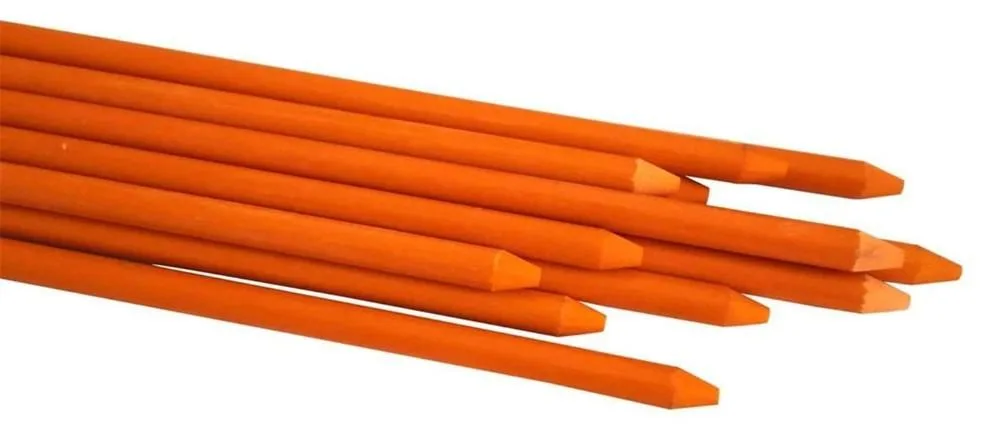Fences are an essential component of any property, providing security, privacy, and a clear boundary. When it comes to choosing the right fence stakes, the decision often boils down to fiberglass or wood. Both materials have their own set of advantages and disadvantages. In this article, Unicomposite composite profiles will delve into the comparison between fiberglass fence stakes and wood fence stakes to help you make an informed choice for your fencing needs.

fiberglass fence stakes
Introduction
When considering fence stakes, the choice between fiberglass and wood can significantly impact the overall performance and appearance of your fence. Let’s dive into the key factors that differentiate these two materials.
Durability and Longevity
Fiberglass: Fiberglass fence stakes are renowned for their exceptional durability. They are resistant to rot, corrosion, and rust, making them an excellent choice for humid and moist environments.
Wood: Wood fence stakes are naturally sturdy but are prone to decay over time. Even treated wood can succumb to weather and pest damage, requiring regular maintenance to ensure longevity.
Installation Ease
Fiberglass: Fiberglass stakes are lightweight and easy to handle, making installation a breeze. They often come with pre-drilled holes and require minimal specialized equipment.
Wood: Wood stakes are heavier and may require more labor-intensive installation. Proper alignment and leveling are crucial for a sturdy fence.
Maintenance Requirements
Fiberglass: These stakes demand very little maintenance. They don’t need painting, staining, or sealing. Occasional cleaning is usually sufficient.
Wood: Wood stakes need regular maintenance to prevent rot and insect infestations. This includes painting, staining, and sealing, which can be time-consuming and costly.
Cost Comparison
Fiberglass: While initial costs might be higher than wood, fiberglass stakes’ longevity and low maintenance can offset the expense over time.
Wood: Wood stakes are often more budget-friendly upfront, but ongoing maintenance costs can add up significantly.
Environmental Impact
Fiberglass: Fiberglass stakes are not biodegradable and can contribute to landfill waste. However, they have a longer lifespan, reducing the need for replacements.
Wood: Wood stakes are biodegradable and have a lower environmental impact when disposed of properly. However, frequent replacements can increase overall wood consumption.
Aesthetic Appeal
Fiberglass: These stakes may lack the natural charm of wood but come in various colors and finishes to match different aesthetics.
Wood: Wood stakes offer a classic, rustic look that many find appealing. However, they can warp or fade over time, affecting their appearance.
Weather Resistance
Fiberglass: Fiberglass stakes can withstand extreme weather conditions, including high winds, rain, and sun exposure, without deteriorating.
Wood: Wood stakes are susceptible to warping, cracking, and fading due to prolonged exposure to harsh weather.
Flexibility and Strength
Fiberglass: Fiberglass stakes have a good balance of flexibility and strength, allowing them to withstand pressure without breaking easily.
Wood: Wood stakes are sturdy but may splinter or break under excessive pressure.
Eco-Friendliness
Fiberglass: While not biodegradable, the longevity of fiberglass stakes reduces the need for frequent replacements, making them environmentally friendly in the long run.
Wood: Wood stakes are renewable and biodegradable, but frequent replacements can contribute to deforestation.
Insect and Pest Resistance
Fiberglass: Fiberglass stakes are not susceptible to insect or pest infestations.
Wood: Wood stakes can be attractive to insects and pests, leading to potential damage.
Recyclability
Fiberglass: Limited recycling options are available for fiberglass stakes, which can pose disposal challenges.
Wood: Wood stakes are easily recyclable and can be repurposed.
Security Considerations
Fiberglass: Fiberglass stakes offer security without compromising visibility, making them suitable for various security applications.
Wood: Wood stakes can be climbed or manipulated, potentially compromising security.
Conclusion
In the debate between fiberglass and wood fence stakes, both materials have their strengths and weaknesses. Fiberglass stakes boast durability, low maintenance, and weather resistance, while wood stakes offer a classic aesthetic and environmental benefits. Your choice depends on your priorities, budget, and long-term goals for your fence.
Frequently Asked Questions (FAQs)
- Are fiberglass stakes more expensive than wood stakes? Fiberglass stakes may have higher upfront costs, but their durability can offset long-term expenses.
- Can wood stakes withstand harsh weather conditions? Wood stakes can degrade over time when exposed to extreme weather conditions.
- Do fiberglass stakes require painting or staining? No, fiberglass stakes come with finishes that eliminate the need for painting or staining.
- Are wood stakes environmentally friendly? Wood stakes are biodegradable, but their frequent replacements can contribute to environmental impact.
- Can I use fiberglass stakes for security fencing? Yes, fiberglass stakes provide security without compromising visibility.
 info@unicomposite.com
info@unicomposite.com


























